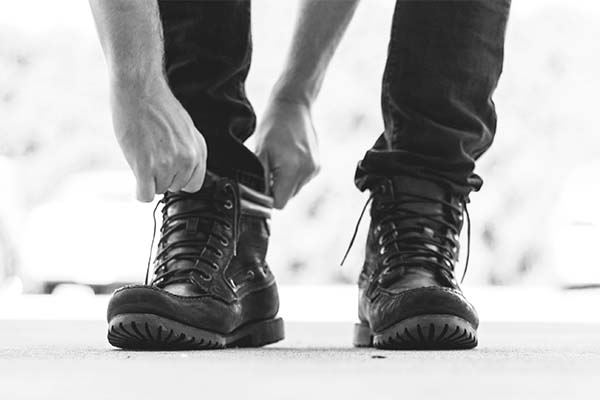How to Make Non-Slip Shoes, DIY
Whether you’re working in a restaurant, hospital, or other environment where slipping is a hazard, or just want to stay safe on wet and slippery floors, making non-slip shoes can be an easy and effective solution. With a little bit of time and effort, you can make your own non-slip shoes and stay safe and comfortable in any situation.
You’ll need some basic materials and equipment, but the process is relatively simple and can be done in just a few hours. With non-slip shoes that you make yourself, you can have the peace of mind of knowing that you’re wearing safe and durable footwear that’s tailored to your preferences.
Materials and Equipment
To make your own non-slip shoes, you’ll need some basic materials and equipment. Here’s what you’ll need:
Types of shoes that work best
- Canvas shoes or sneakers work well for this project as they provide a sturdy base for the non-slip coating to adhere to.
Avoid shoes made of materials that may be damaged by the non-slip coating, such as leather or suede.
Materials needed for the project
- Non-slip spray or liquid coating: There are a variety of non-slip coatings available, such as rubberized or acrylic-based formulas.
- Sandpaper: Use sandpaper to roughen the surface of the shoe and create a better surface for the non-slip coating to adhere to.
- Tape: Use tape to protect areas of the shoe that you don’t want to coat, such as the soles or edges.
- Cloth or paper towels: Use these to clean and dry the shoes before and after applying the coating.
Equipment needed for the project
- A well-ventilated workspace: As you’ll be working with a non-slip coating, it’s important to work in a well-ventilated area to avoid inhaling fumes.
- Gloves: Wear gloves to protect your hands from the coating.
- Mask: A mask will help to protect you from inhaling any fumes.
- Spray bottle or brush: You can apply the coating using a spray bottle or a brush, depending on the type of coating you’re using.
Buy Non-Slip Shoes on Amazon.com
Steps to Make Non-Slip Shoes
Now that you have your materials and equipment ready, it’s time to start making your non-slip shoes. Below you’ll find the steps on how to make non-slip shoes.
Preparing the shoes
- Start by cleaning the shoes with soap and water and let them dry completely.
- Use sandpaper to roughen the surface of the shoes. This will help the non-slip coating adhere better.
Applying the non-slip coating
- Protect the areas of the shoes that you don’t want to coat, such as the soles or edges, with tape.
- Put on gloves and a mask to protect yourself from the coating.
- Apply the non-slip coating to the shoes, following the instructions on the product label. You can use a spray bottle or a brush to apply the coating, depending on the type of product you’re using.
- Apply a second coat if necessary, making sure to follow the recommended drying time between coats.
Drying and curing the coating
- Once you’ve applied the non-slip coating, let the shoes dry completely. This may take several hours, depending on the product you’re using.
- After the shoes have dried, allow the coating to cure for the recommended time, which may be up to 48 hours. This will ensure that the coating is fully cured and won’t peel off easily.
Congratulations! You’ve successfully made your own non-slip shoes. Now it’s time to test them out to ensure they provide the level of grip and slip resistance you need.
Testing Your Non-Slip Shoes
Before you start wearing your non-slip shoes, it’s important to test them out to make sure they provide the level of slip resistance you need. Here are some safety considerations and methods for testing your non-slip shoes:
Safety considerations
- Make sure the surface you’re testing on is wet or slippery, such as a wet floor or a surface covered in oil or grease.
- Use caution when testing your shoes to avoid slipping and falling.
Methods for testing your non-slip shoes
- The simplest method is to walk on a wet surface while wearing your shoes and assess how much traction you have. Walk slowly and carefully to avoid slipping and falling.
- You can also perform a slip resistance test using a tribometer, which measures the coefficient of friction between your shoes and the surface you’re testing on. This is a more accurate method of testing slip resistance, but may require specialized equipment.
By testing your non-slip shoes, you can ensure that they provide the level of slip resistance you need to stay safe on the job or in everyday life. If you find that your shoes are not providing enough traction, you may need to apply another coat of non-slip coating or try a different product.
Additional Tips and Tricks
Here are some additional tips and tricks to help you make the most out of your non-slip shoes:
Apply the coating evenly Make sure to apply the non-slip coating evenly to avoid creating uneven areas on the surface of your shoes. This will ensure that your shoes provide consistent slip resistance.
Use a high-quality non-slip coating Investing in a high-quality non-slip coating can make a big difference in the slip resistance of your shoes. Look for products that are specifically designed for shoes and have good reviews.
Reapply the coating as needed Over time, the non-slip coating on your shoes may wear off or become less effective. To maintain the slip resistance of your shoes, consider reapplying the coating every few months or as needed.
Consider adding non-slip insoles If your shoes still don’t provide enough slip resistance, consider adding non-slip insoles to your shoes. This can help improve traction and make your shoes safer to wear on slippery surfaces.
By following these tips and tricks, you can ensure that your non-slip shoes provide the level of slip resistance you need to stay safe and comfortable. Whether you’re working in a hazardous environment or just want to avoid slipping on wet floors, making your own non-slip shoes can be a simple and effective solution.






